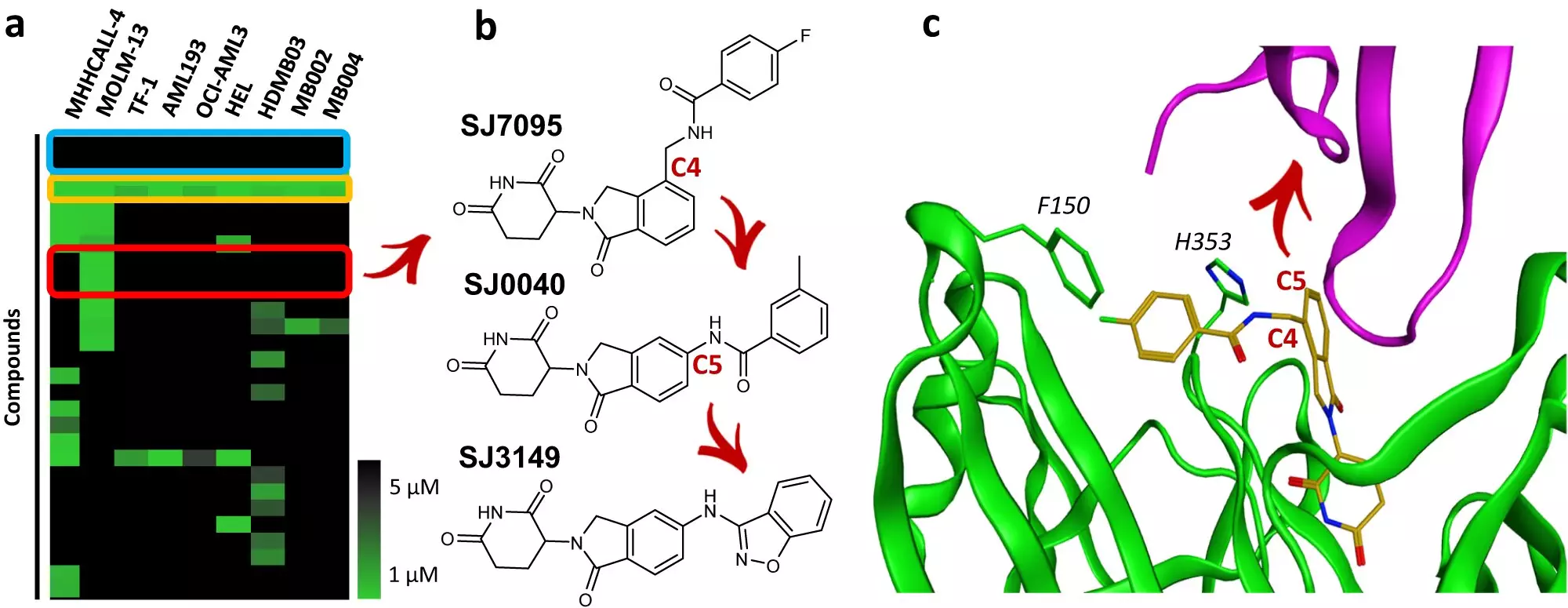St. Jude Children’s Research Hospital scientists have recently achieved a groundbreaking discovery in the field of cancer research with the development of SJ3149. This compound has shown promising efficacy against various cancer types, notably acute myeloid leukemia (AML). In a recently published study in the journal Nature Communications, the researchers describe how SJ3149 acts as a powerful “molecular super-glue” that targets the cancer-related protein, casein kinase 1 alpha (CK1α), leading to its degradation. This article delves into the significance of this discovery and its potential implications for future cancer treatments.
Traditional small molecule inhibitors have limitations when targeting certain cancer-related proteins. To overcome this challenge, the scientists at St. Jude developed a vast proprietary library of molecular glues. These glues work by utilizing the cell’s natural protein recycling mechanism, effectively hijacking it to mark the targeted protein for degradation through a process called proteasomal degradation. Molecular glues offer a novel therapeutic alternative for targeting previously undruggable proteins, opening up new possibilities in cancer treatment.
The researchers at St. Jude screened their molecular glue library against a range of cancer cell lines and identified an initial hit, which they optimized to create SJ3149. This refined molecule exhibited increased potency and fewer off-target effects compared to similar compounds. Remarkably, SJ3149 demonstrated broad anti-cancer activity, earning it the nickname “super-glue.” The compound’s similarities to approved cancer drugs further suggest its potential clinical utility.
To gain insights into how SJ3149 operates, the scientists crystallized the complex formed by the compound and the targeted protein CK1α with the cell’s protein degradation machinery called ubiquitin ligase apparatus. The crystallized structure unveiled the direct interaction between SJ3149 and CK1α. By connecting CK1α to the enzyme responsible for cellular degradation, SJ3149 effectively enhances degradation efficacy. Understanding the atomic-level mechanisms of such compounds holds promise for the rational design of future molecular glues.
This breakthrough in developing SJ3149 illustrates the possibility of employing the St. Jude approach to accelerate the discovery of potential therapies for other targets. The success of the compound in vitro and in vivo experiments highlights the potential for future use in the treatment of various pediatric cancers. However, it should be noted that SJ3149 is currently a lead compound and requires further testing and development.
The creation of SJ3149 was a result of extensive collaboration and expertise. The process involved designing, synthesizing, and screening the molecular glue library, followed by structure-guided medicinal chemistry optimization and testing in patient-derived cancer cells. The combined efforts of Dr. Zoran Rankovic, Dr. Marcus Fischer, Dr. Jeffery Klco, along with internal and external collaborators, made this groundbreaking discovery possible. This approach can now serve as a starting point for future discoveries in cancer treatment.
The development of SJ3149 represents a significant leap forward in cancer research and treatment. By harnessing the power of molecular glues, St. Jude scientists have paved the way for targeting previously undruggable proteins, expanding the possibilities for novel therapeutic strategies. Although SJ3149 is still in its early stages, it holds tremendous potential for the treatment of various pediatric cancers. This breakthrough serves as a blueprint for future studies and further strengthens the field of chemical biology in its quest to combat cancer.


Leave a Reply